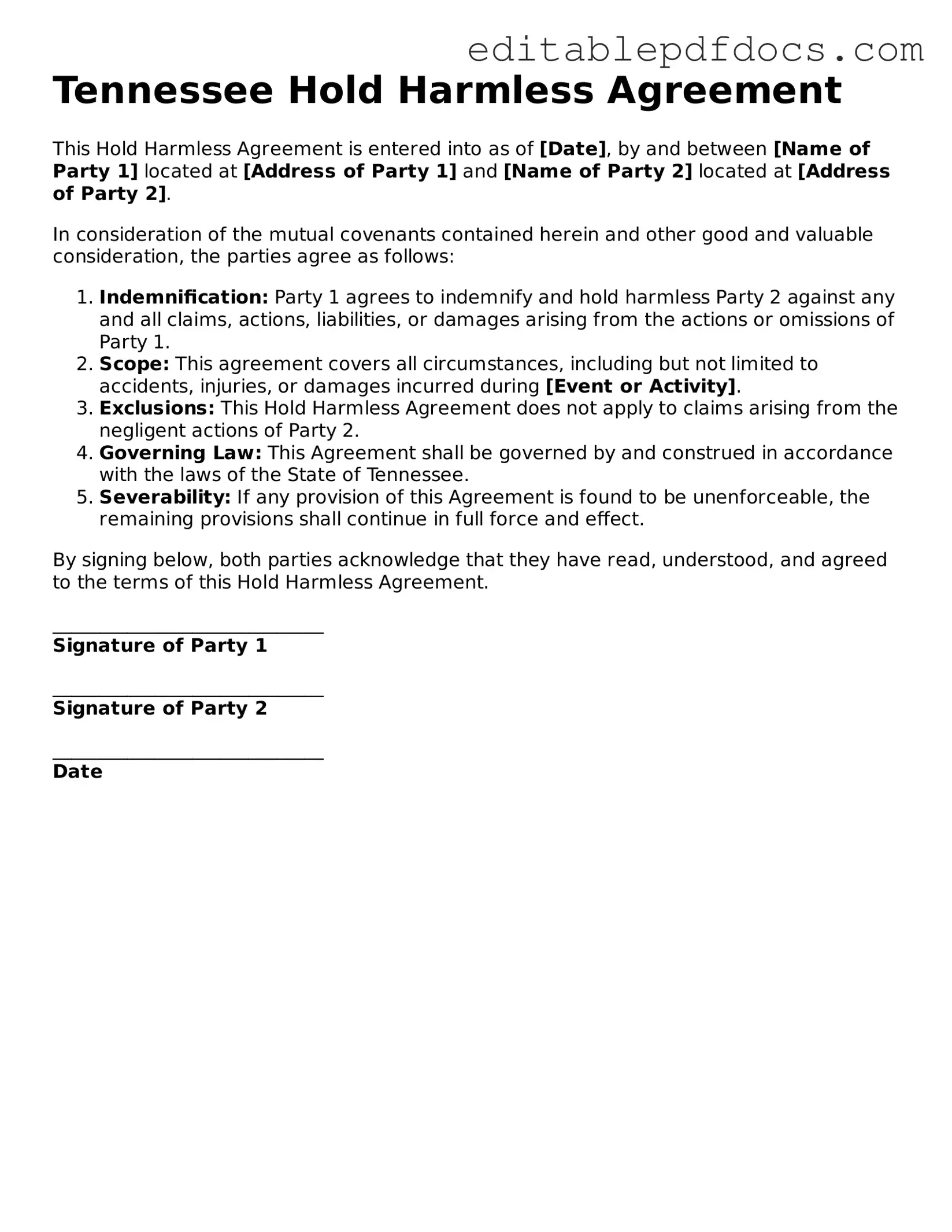Filling out the Tennessee Hold Harmless Agreement form can be straightforward, but many people make common mistakes that can lead to complications. One frequent error is failing to provide complete information. Ensure that all fields are filled out accurately. Missing details can create confusion and may render the agreement unenforceable.
Another mistake is not understanding the scope of the agreement. It’s essential to know what liabilities you are agreeing to hold harmless. Some individuals may overlook specific terms, which can lead to unintended consequences. Always read the agreement carefully to grasp what you are signing.
Many people also neglect to date the form. A missing date can raise questions about when the agreement was made, potentially affecting its validity. Always include the date to provide clarity and context for the agreement.
Signing the form without reading it thoroughly is a common oversight. Rushing through the process can lead to misunderstandings about your rights and obligations. Take your time to review the entire document to ensure you are comfortable with its terms.
In some cases, individuals fail to include witnesses or notarization when required. Depending on the context of the agreement, having a witness or notarization may be necessary for it to be legally binding. Check the requirements to ensure compliance.
Another mistake is using outdated forms. Regulations and requirements can change, so it’s crucial to use the most current version of the Hold Harmless Agreement. Verify that you have the latest form before proceeding.
People often forget to clarify the parties involved. Clearly identify who is holding harmless and who is being held harmless. Ambiguity in this area can lead to disputes later on. Precision is key in legal agreements.
Some individuals may overlook the importance of consulting a legal professional. While the form may seem simple, having legal guidance can help avoid pitfalls. Consulting with an expert can provide peace of mind and ensure all aspects are covered.
Additionally, failing to keep a copy of the signed agreement is a common mistake. After completing the form, retain a copy for your records. This can be invaluable if questions arise in the future.
Lastly, many people underestimate the importance of communication. If you are filling out this agreement with another party, make sure to discuss it openly. Clear communication can prevent misunderstandings and ensure that all parties are on the same page.
